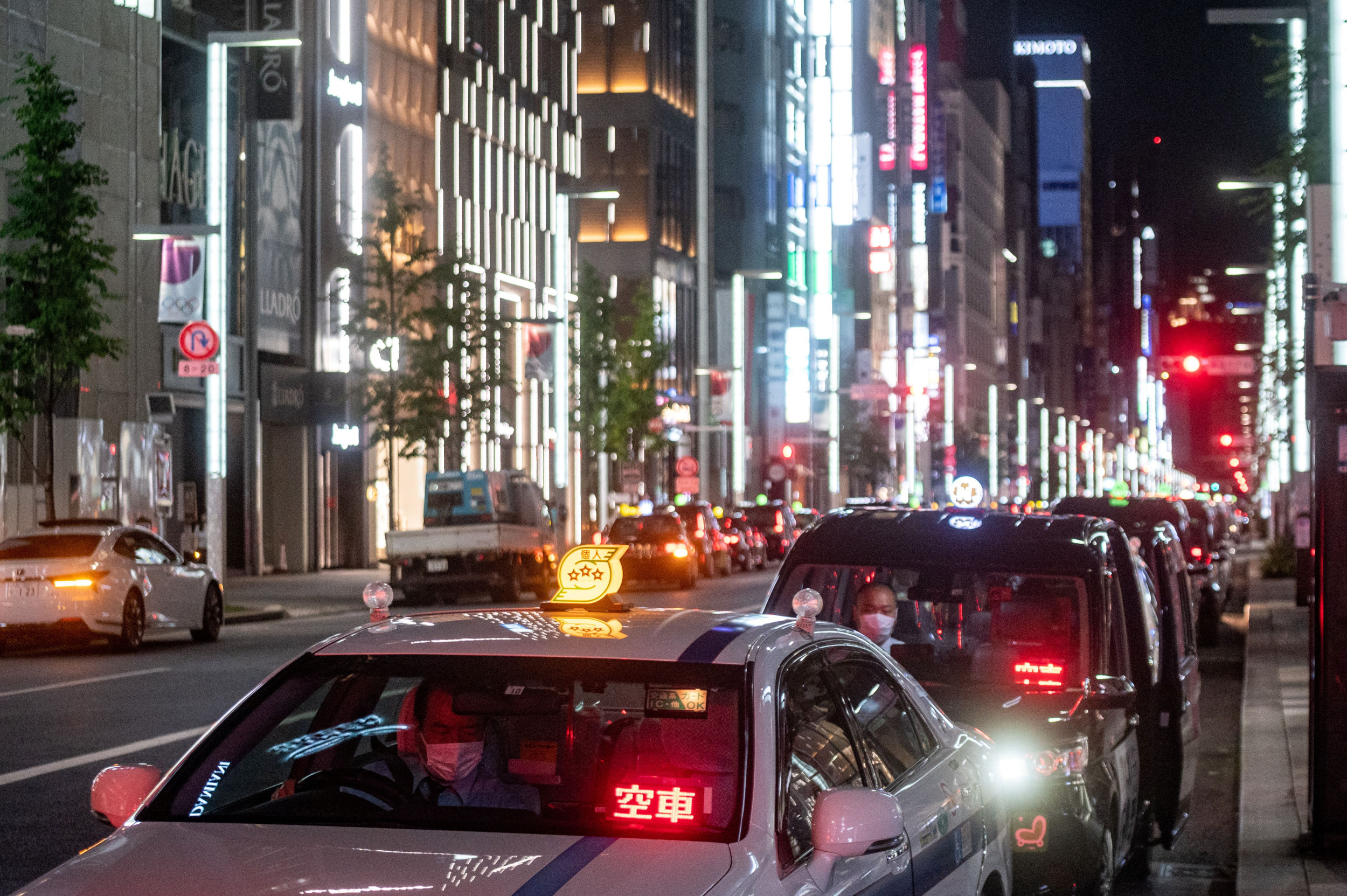Japan job market points to shift on immigration

Japan is hoping to tackle a worsening manpower shortage in its transportation industry by licensing up to 24,500 foreign taxi, bus, and truck drivers by fiscal year 2028.
While public acceptance of large-scale immigration has been slow to develop in Japan, many sectors facing acute labor shortages—such as construction, manufacturing, agriculture, and elder care—are struggling to fill roles amid a dearth of interest among younger Japanese.
The government took a step toward increasing the country’s appeal to foreign workers in March, when the cabinet approved the addition of transportation services to the “specified skilled worker” visa category, allowing foreigners in the industry to apply for medium- and long-term visas.
Philip Fong/AFP via Getty Images
Authorities also expedited efforts to translate the Class 2 driver’s license exam required for commercial vehicle operation. By September, every police precinct nationwide offered the test in multiple languages.
Some companies are already benefiting, such as Kyoto-based Matsushima Mobility Service, which recently hired Moroccan national Belkouchia Youssef. Belkouchia acquired his Class 2 license after taking the exam in Arabic.
Although fluent in spoken Japanese, Youssef found technical terms challenging to read and write.
“Because of the shortage and aging of Japanese drivers, the demand for foreign drivers is rising,” said Masaki Tanabe, president of Tokyo-based staffing company Guidable Inc., which helped Youssef secure employment. Some 80 percent of the firm’s customers are foreign nationals, many of them tourists.
The shift in immigration policies comes amid mounting demographic challenges.
People over 65 account for about 30 percent of the “super-aged” society. Compounding the issue is one of the world’s lowest fertility rates, which last year dipped to just 1.2 births expected per woman—a figure well below the replacement rate of 2.1.
As a result, Japan has been forced to turn to immigration in hopes it can help offset the shrinking labor pool. The country is projected to welcome 820,000 foreign workers over the next five years, more than double the number in the previous five years.
Foreign workers have been steadily increasing in Japan, with 2.05 million employed as of October, a 40 percent rise since 2018, according to Nikkei Asia. The overall number of foreign residents hit a record 3.32 million as of January,
Vietnamese nationals make up the largest share at 25 percent, followed by Chinese (19 percent) and Filipinos (11 percent). However, the government’s Japan International Cooperation Agency estimates that Japan will need three times this number by 2040 to meet its economic growth targets.
In June, the Japanese parliament approved measures to make it easier for foreign workers to remain in the country, including a pathway for inexperienced workers to gain three years of skills training and flexibility to change jobs within the same industry after one year if they meet language and professional standards.
These policies align with earlier efforts to expand visas that allow five-year stays and, in some cases, permanent residency with family accompaniment.
Newsweek reached out to the Japanese Ministry of Land, Infrastructure, Transport and Tourism with a written request for comment.
Related
A top recruiter says sports marketing roles are hot right…
Jobs are opening up in the sports industry as teams expand and money flows into the industry.Excel Search &
Public employees and the private job market: Where will fired…
Fired federal workers are looking at what their futures hold. One question that's come up: Can they find similar salaries and benefits in the private sector?
Mortgage and refinance rates today, March 8, 2025: Rates fall…
After two days of increases, mortgage rates are back down again today. According to Zillow, the average 30-year fixed rate has decreased by four basis points t
U.S. economy adds jobs as federal layoffs and rising unemployment…
Julia Coronado: I think it's too early to say that the U.S. is heading to a recession. Certainly, we have seen the U.S. just continue t










